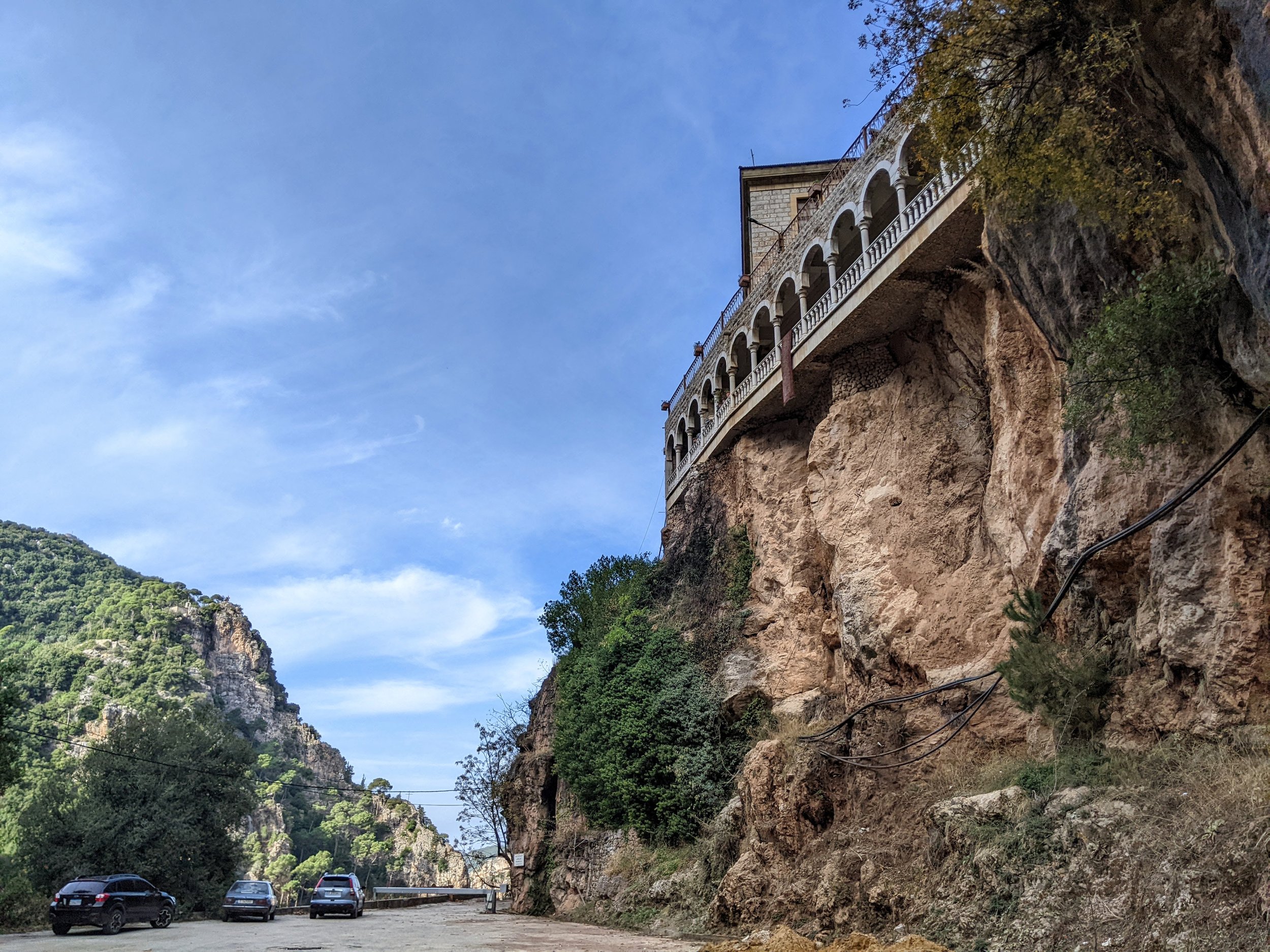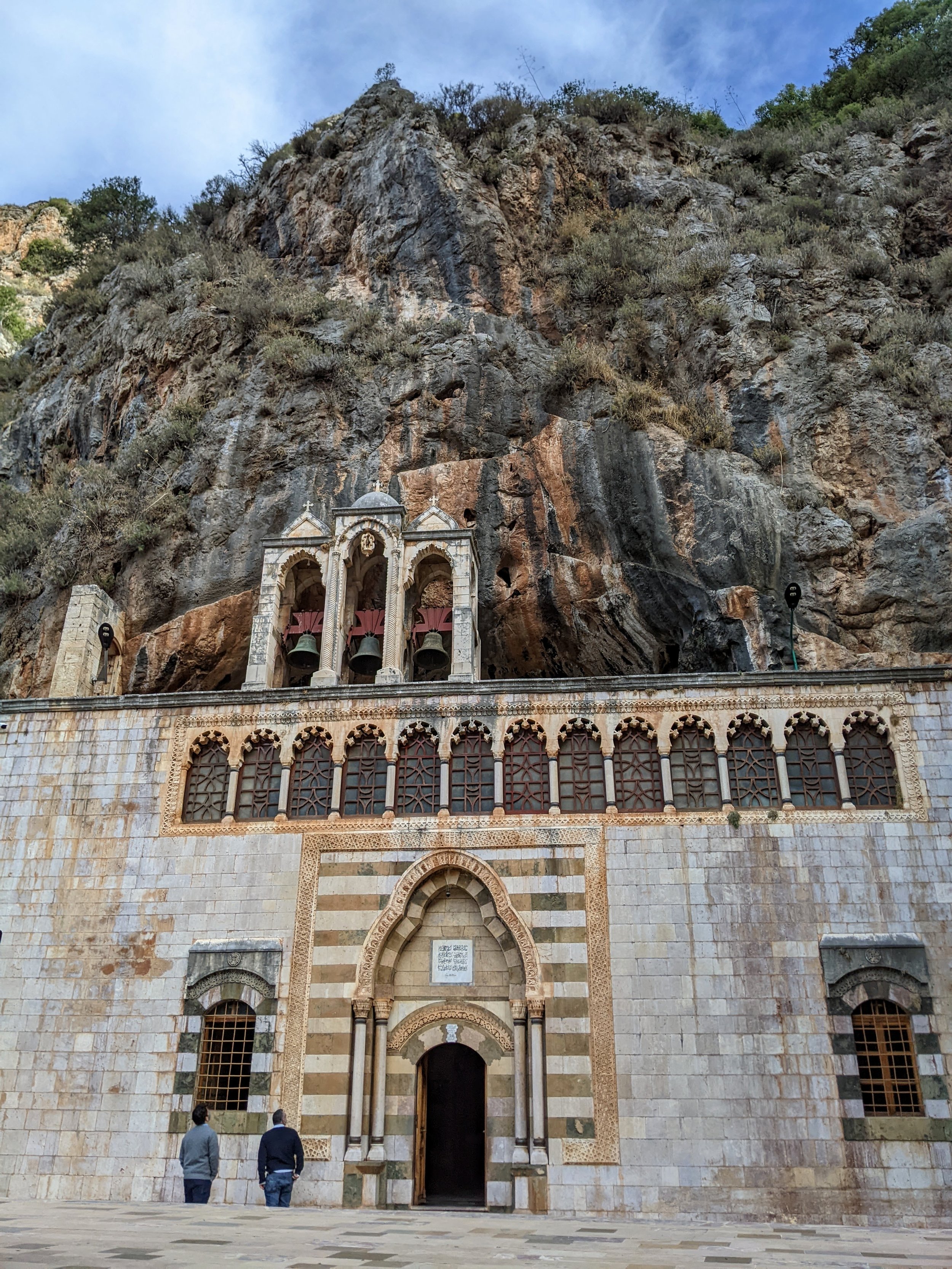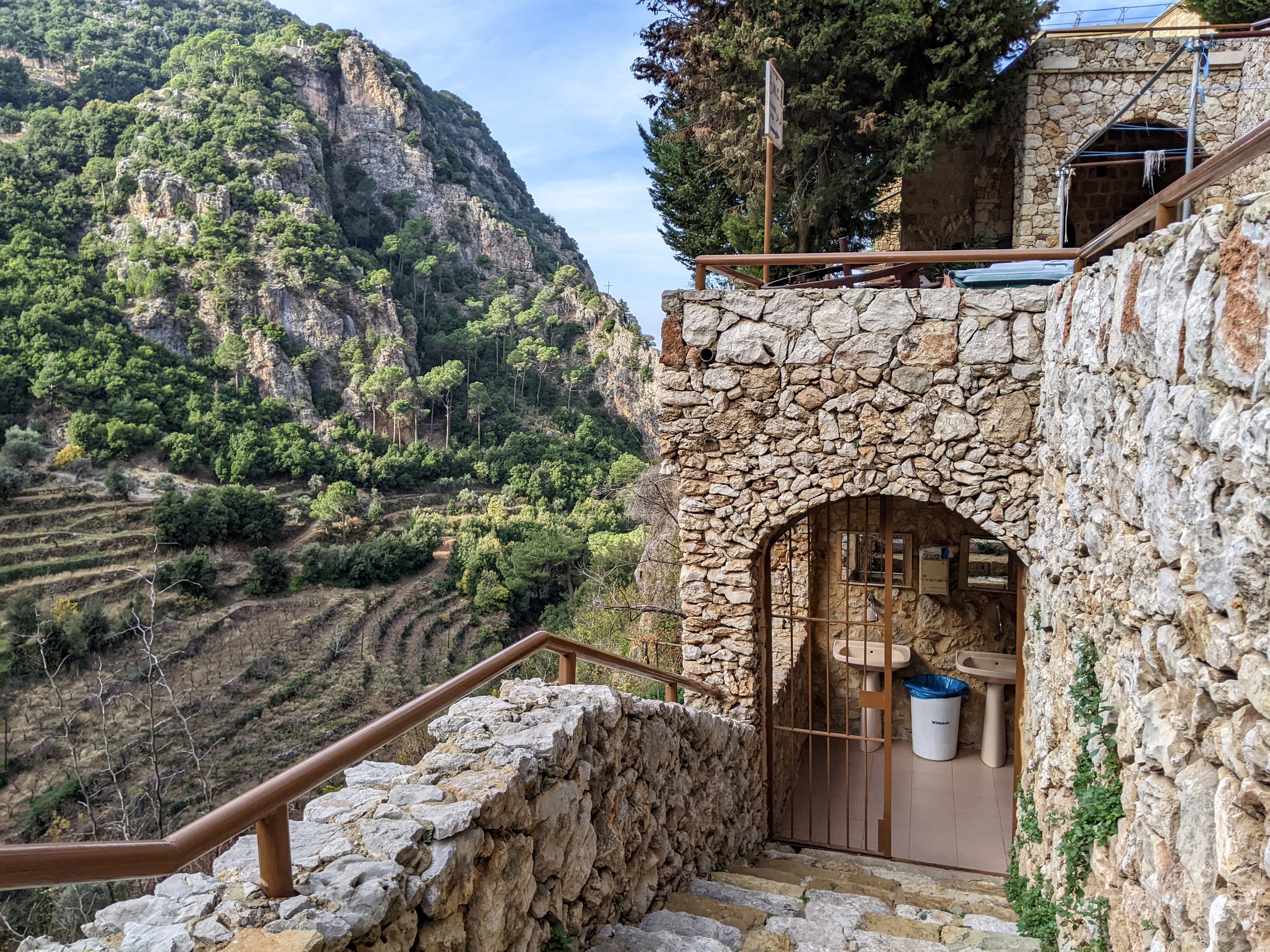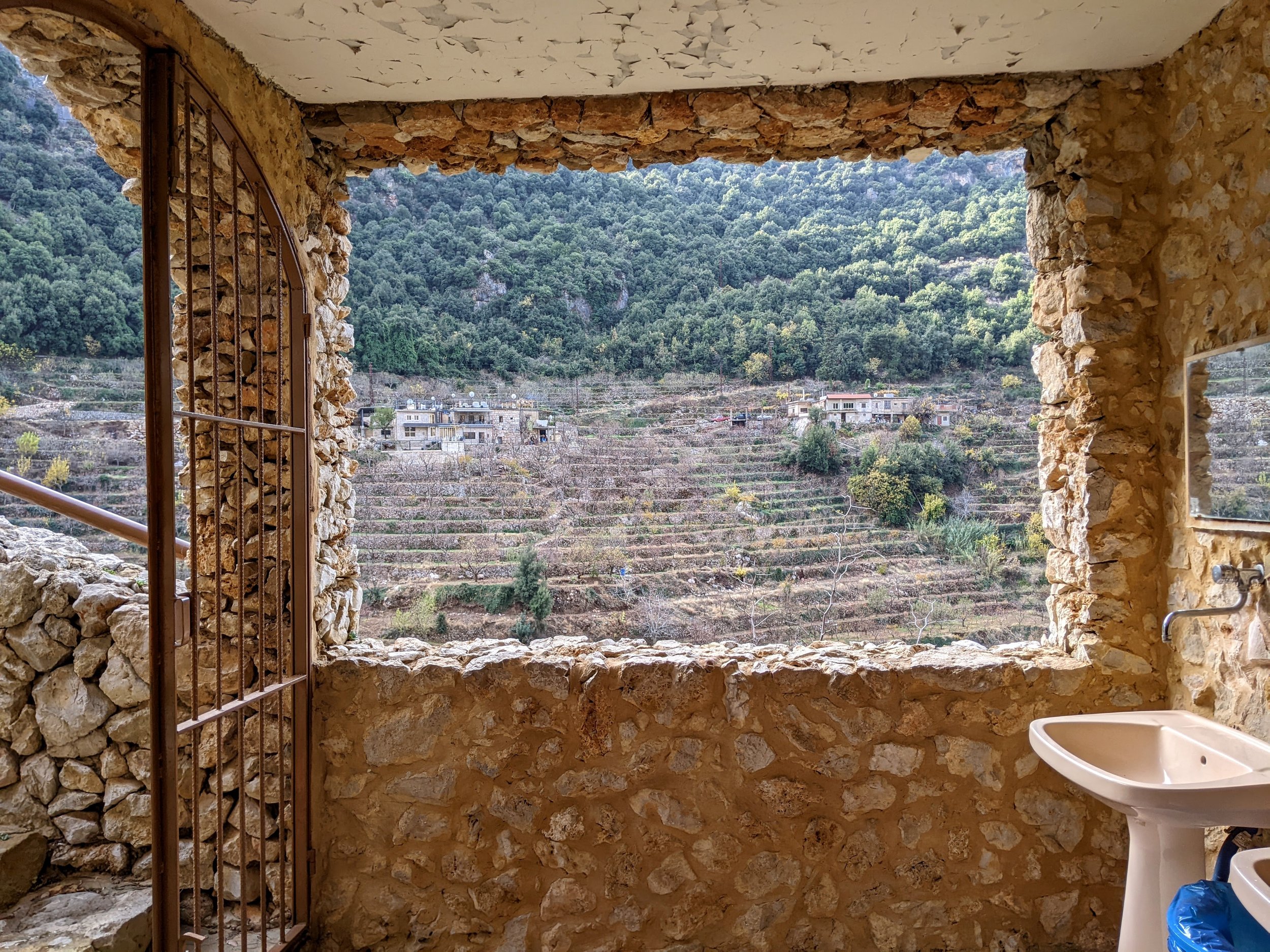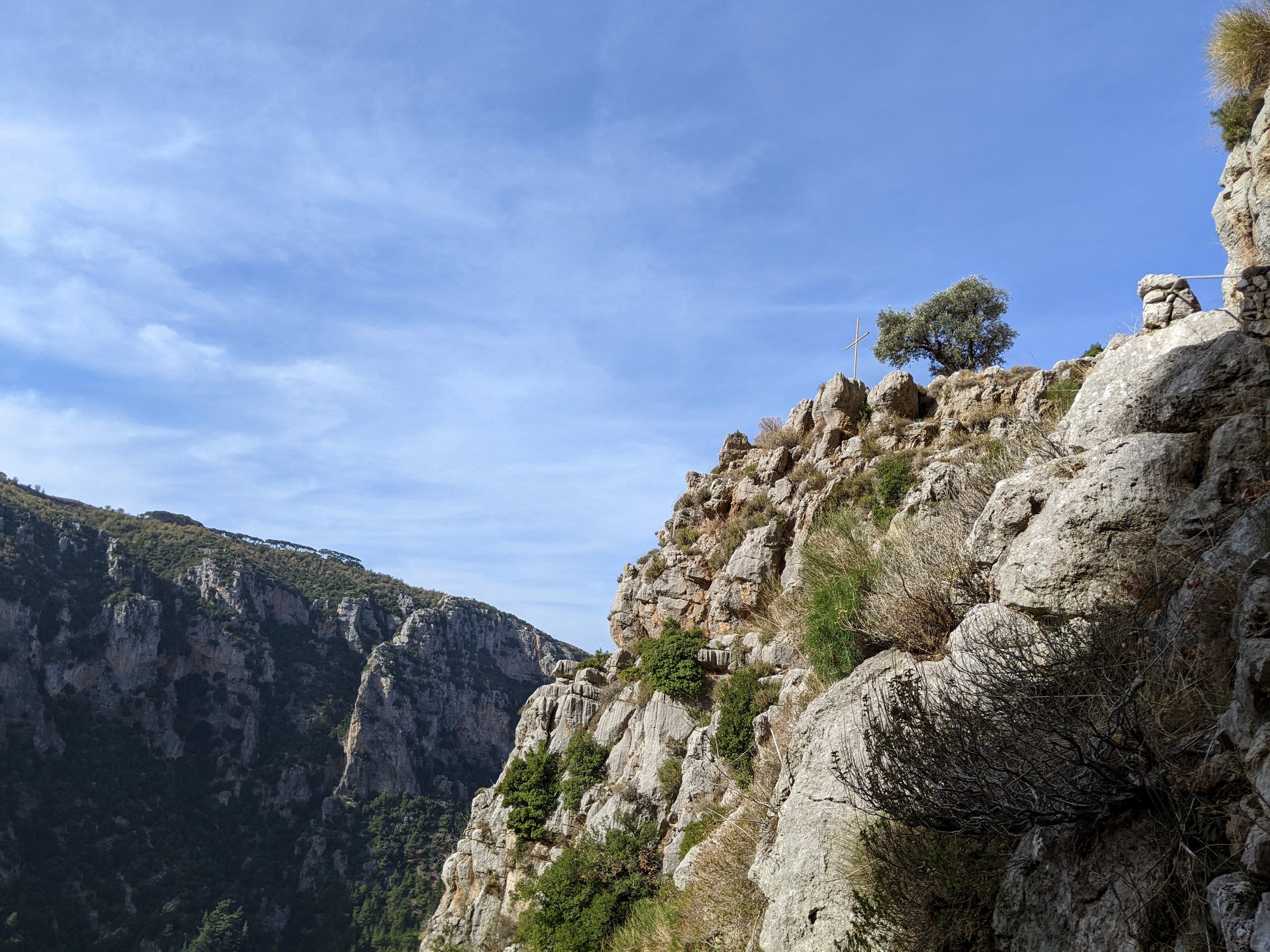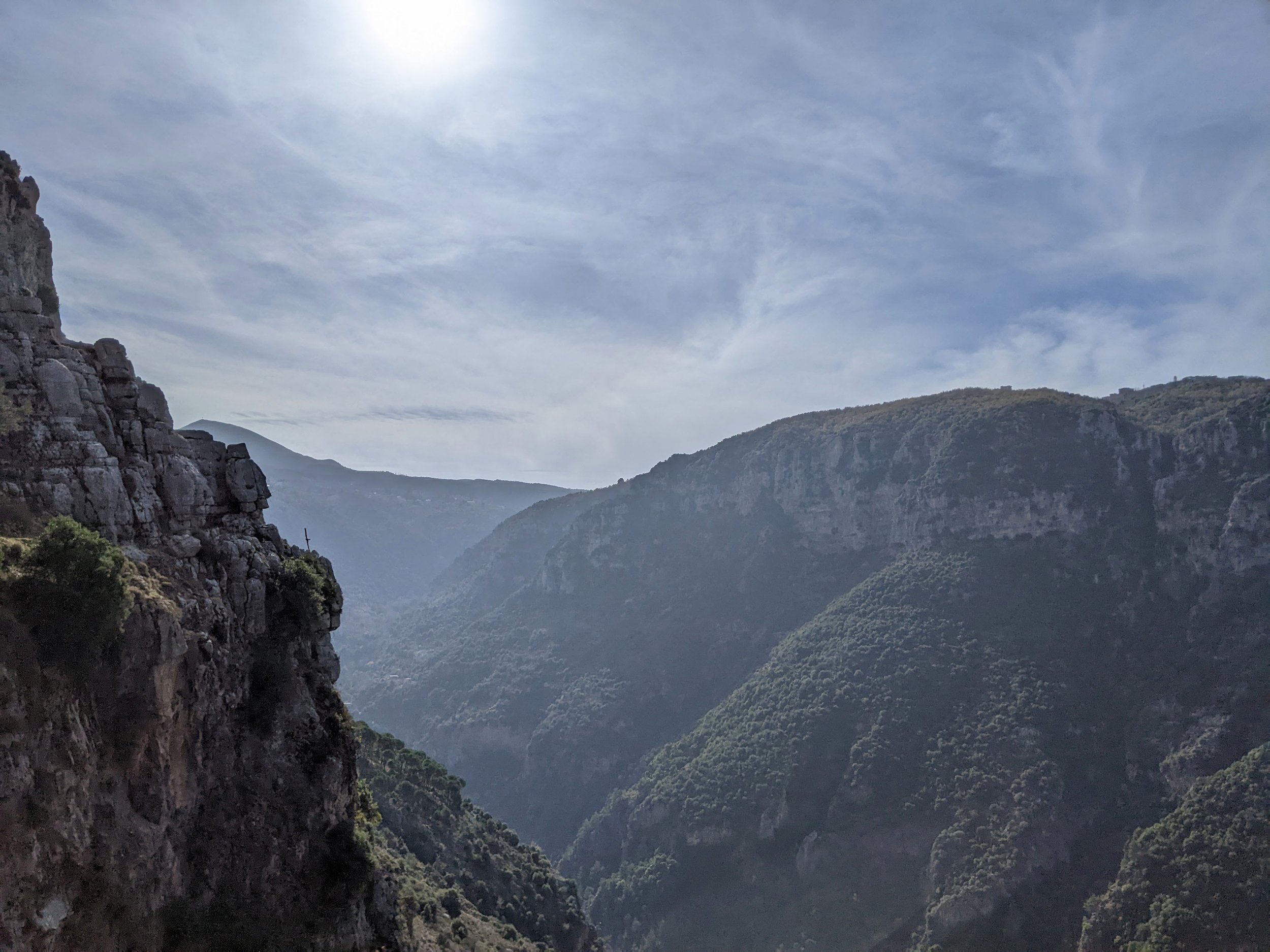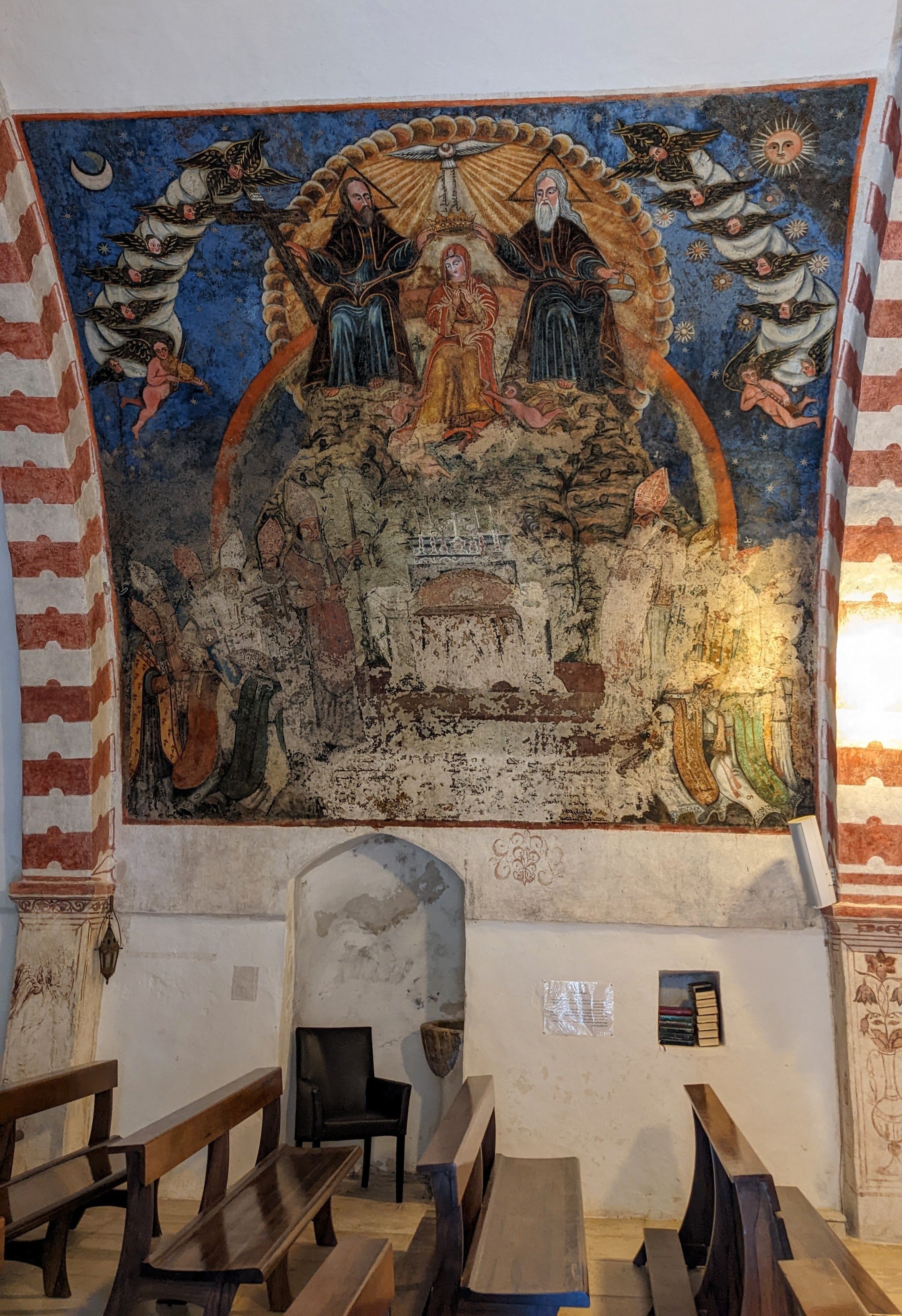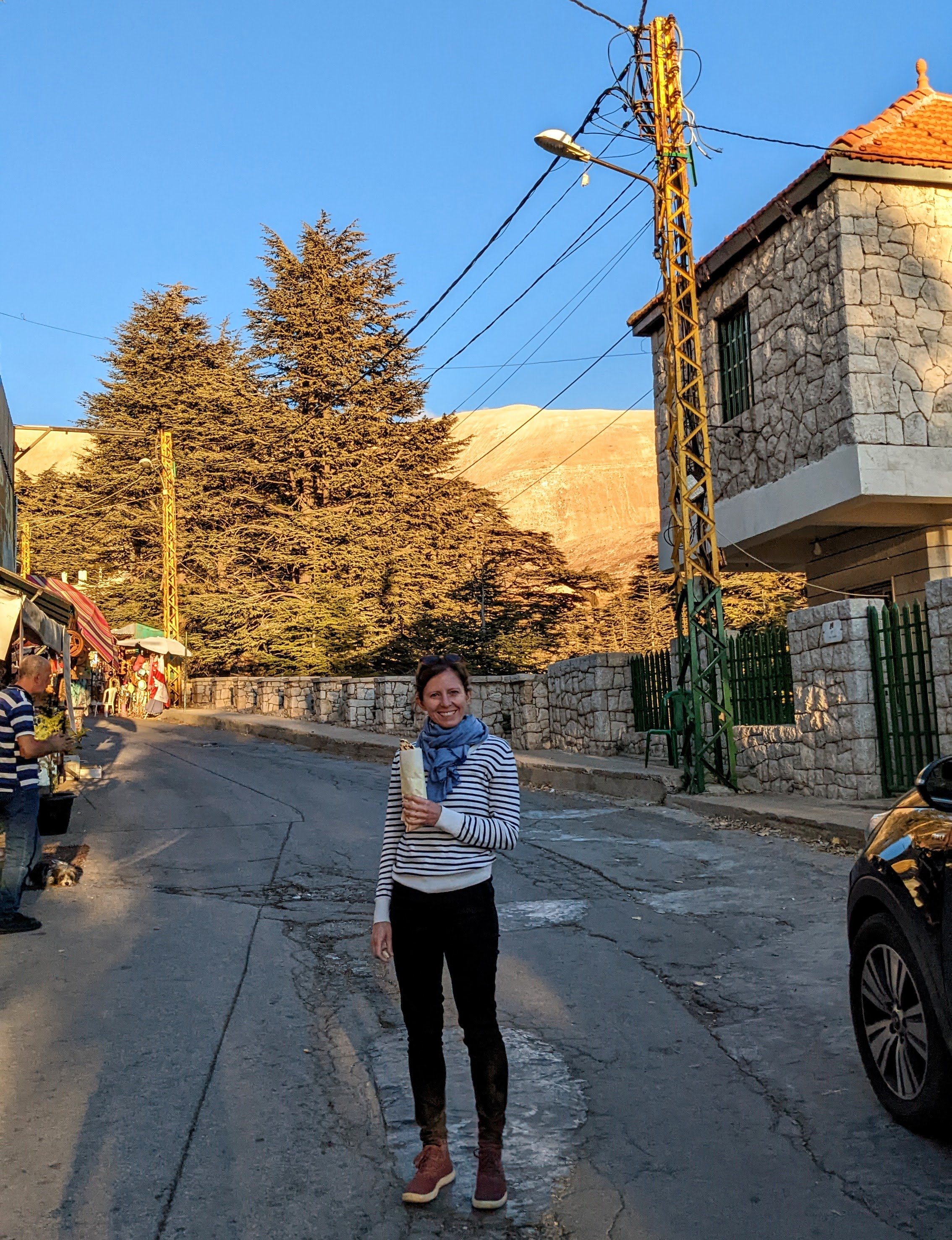lebanese dispatch: qadisha valley
My dear friend,
Our first glimpse of the Holy (Qadisha / Kadisha) Valley in Lebanon could not have felt holier. Our little rental car (a Peugeot with a strong will and a grumbly demeanor) chugged up a series of snaking mountain roads. Then, as we began to descend the other side, we came across a cloud bank so thick, so frothy, that it looked for all the world like ocean waves lapping at the mountainside.
We pulled off to the side of the road to marvel at the sight, but we didn’t stay for long. It was cold above the clouds, and the sun was setting. I was already worried about navigating the mountain roads in the dark, and I wasn’t too keen on adding fog and mist to the hairpin turns. So we climbed back into the car, turned up the Arabic chanting on a radio station called “Sounds of Grace,” and motored on down to our lodgings in Bsharre.
The guesthouse was spare but clean. We ordered two pizzas (one cheese, one Nutella) and watched a quirky Lebanese film on C.’s laptop. We didn’t shower, since the the house was chilly, and the shower apparatus was just a nozzle in an uncurtained corner of the bathroom. In the morning, we finished our Nutella pizza on a secluded garden patio, stowed our bags once more in the trunk, and continued our trek into the valley.
I hadn’t had my daily latte (we asked our host if there was coffee anywhere around town, and he said no), but I tried to follow the example of the Peugeot by chugging merrily, stubbornly along. I reminded myself that the monks who’d sought shelter and sanctuary in this valley had probably not had access to daily comforts such as lattes, either—but then, history books do not address this point, so we really can’t know for sure.
For centuries, the valley—named for the Qadisha River that carved a path through it—provided a home for early Christians escaping persecution and Muslim mystics seeking solitude. Of all the groups who have taken shelter in the valley, it’s the Maronites who have established the most lasting presence.
Last year, when C. and I were visiting the mountains for the first time, our guide stopped to show us the Monastery of St. Anthony of Qozhaya, which is said to be one of the oldest in the valley and is also home to the third-ever printing press in the Middle East.
I was impressed by the printing press and the grotto chapel, but I was perhaps even more impressed by the restrooms. They must have boasted the most beautiful view of any bathroom in Lebanon!
Our guide also led us down a rocky path to a hermitage at the edge of a cliff. He was excited for us to meet the eighty-something-year-old Maronite monk who lived there by himself, but when we arrived, the door was shut and locked. “I guess he doesn’t feel like talking to visitors today,” our guide said, rather sadly. I knocked loudly on the door, just to be sure (much to C.’s dismay)—but alas, there was no answer. There was only the wind whistling through the valley.
Our plan on this second trip to the Qadisha Valley was to drive our car down the side of the mountain and across the valley floor until we were within a ten minutes’ walk of the Deir Qannoubin convent, which has existed in some form here since the 4th century and which housed the Maronite Patriarchs (the leaders of the Maronite Church) between 1440 and 1790. While all of the buildings and communities in the Qadisha Valley are very old, many sources agree that Deir Qannoubin may in fact by the oldest.
We managed to get the car down the mountain, but the road along the valley floor was so rutted and rocky that after a few minutes we gave up, reversed back to a tiny, dusty parking lot where the road had dropped us in the valley, and proceeded the 5 km on foot.
We had plenty of water, but no snacks. Although I was growing a little hungry, I distracted myself by admiring the way the light filtered through the pines, and by reading the scattered plaques we encountered that pointed out burial mounds of the patriarchs, and by spotting crumbling stone structures built into the mountainside above us or across from us.
Deir Qannoubin was worth the walk. A brief climb up the hillside landed us in a courtyard that opened onto a walkway along the cliff’s edge. We had a few minutes to ourselves before a school group arrived. Suddenly teenagers were swarming all over the rocks and enthusiastically swinging themselves from the bell rope.
To escape the clanging, we explored a chapel, cool and dark, that had been carved into a cave.
We peeked into a meeting space dedicated to the Maronite Patriarchs and wandered into a one-room museum that seemed interesting enough until I turned and caught sight of a decaying body behind glass. Since corpses tend to make me nervous (I avoided the mummy room in the Egyptian Museum, as well), I darted out of the museum and took a seat in a pew in the church. While I waited there for C., one of the four nuns living on the premises began telling me about the frescoes: Daniel in the lion’s den, Joseph with his carpenter’s tools, and—most famously—a mural of the Virgin Mary being crowned while the Maronite Patriarchs looked on approvingly.
“We actually have one of the patriarchs here in the museum,” the nun told me in French-accented English. “He is well-preserved!”
“Yes, I saw him,” I replied. I mustered a wan smile and decided it would be best not to quibble about our varying definitions of “well-preserved.”
Finally the giant bell stopped its clamorous tolling, so C. and I poked our heads back into the courtyard. It was lunchtime on the field trip: the kids were sprawled on the steps, on the stone floors, on the wooden benches, munching on man’oushe: Lebanese flatbread filled with cheese or the spice mix za’atar. Someone must have heard my stomach growl, because suddenly a young man appeared before me with a full basket. “Man’oushe?” he offered. “It is a typical Lebanese food.”
“I love man’oushe!” I declared. A moment later another man appeared with another basket overflowing with grape tomatoes and cucumbers. We filled our hands with this unexpected bounty and moved to an empty bench overlooking the valley to eat before our walk back. The Sister appeared again, wreathed in wrinkles and smiles. She refilled our water bottles and wished us a safe journey.
Newly fortified, we ambled over to the chapel of Mar Marina, a woman who disguised herself as a man in order to live as a monk in the Qannoubine Monastery. Legend has it that when she was falsely accused of fathering a child, she accepted the abbot’s punishment and raised the baby without divulging her secret. It was only years later, when she died in her monk’s cell and her body was being prepared for burial, that the others in the monastery realized she could not have committed that particular sin.
Finally we left Qannoubine and motored back up the mountainside. We rolled into a small town called Bekaa Kafra, famous for being the highest village in Lebanon and the birthplace of Saint Charbel. The whole place was lovely, especially in the late afternoon light. As the sun set, the cream-colored stones glowed gold.
Although I had never heard of Saint Charbel before arriving, I feel well-acquainted with him now. We visited his birthplace, his chapel, his museum, a bit of his teeth, and saw statues and images of him on every corner. Evidently he had a gift for uniting Christians and Muslims. People say that after he died, his body was exhumed several times over the following decades, and every time (except for the last, when it seems that all that exhumation finally took its toll), the body was still flexible and bleeding as if he had just died earlier that day. Talk about “well-preserved”!
We were there so that C. could do some research for his new project. The priest that C. was hoping to interview, an expert on the history of the town and the surrounding region, shared the same name as the dead saint. So, when we asked around town for him, we tried to specify that we meant the living Charbel Makhlouf. Most residents peered at us strangely. Others asked if we wanted to purchase fragrant bottles of spices, or orange rinds, or jars full of olives or balls of cheese floating in liquid.
While C. tried to call the living Charbel Makhlouf from the steps of the church where he supposedly preached, I wandered over to a corner convenience store in the hope of rustling up some caffeine.
It was here—miraculously!—that we found what we were looking for. The caffeine, yes, which came in the form of tea that the proprietor brought out to us on the makeshift patio outside his shop (plastic chairs we carried out to the cobblestones); but also the information, which a younger relative of the proprietor was able to provide. From him, we learned that our Charbel would be administering the five o’clock mass in Bsharre, the village across the valley where we’d stayed the night before. We finished our tea, thanked everyone for their warm welcome and generous assistance, and continued on our quest.
It took another friendly Lebanese man to track down the Father for us at the cathedral. When we were finally ushered into Charbel’s office for a brief interview, we started out in English but soon switched over to French. I dredged up all those dutiful hours of high-school language lessons and managed to ask the priest, in French that sounded suitably impressive to my own ears (if less impressive to native speakers), about the history of the Bekaa Chafra, the economics of the region, and the factors that compelled waves of Lebanese to emigrate. At the end of the interview, Charbel told us that a relative of C.’s subject—a member of the family branch that had remained in Lebanon—owned a hotel a twenty-minute drive from us, near one of the entrances to the cedar preserve. After another round of effusive “mercis,” C. and his self-appointed research assistant started up the car and headed for the hotel.
(But first, since the research assistant was hungry again, we stopped along the way for another man’oushe at a little stand in front of the cedars.)
When we reached the hotel, we found that it was closed for the season. Two caretakers came out to ask what we were looking for, and we did our best to explain in halting Arabic. The man we were hoping to find was in Beirut, it turned out, but we left with his phone number and a glowing sense—at least on my part—of accomplishment. Or maybe that was just an after-effect of the melted cheese in the man’oushe?
I know it sounds strange—but in some ways, the Holy Valley seemed to intuit and provide exactly what we needed. I was hungry, and man’oushe appeared (not once, but twice!); I was tired, and a strange family brewed me tea. C. needed information for his research, and we found it; I was feeling low about my language skills, and a priest accepted my rusty French without question.
Do you believe that it’s possible for places to be, if not holy, then—sentient, somehow? Alive? Do you think that landscapes are ever aware of us as we’re moving through them, resting the soles of our shoes on their rocks, dragging our fingers along their time-weathered walls?
When I was in Wyoming this summer, I told my fellow artists that I felt the Western hills were indifferent to me, and that I liked this about them. What did I matter to them? What was my lifespan compared to theirs?
But I didn’t feel this way in the Qadisha Valley. From the moment we rounded the bend in the highway and were greeted by a sea of clouds at the precise moment that the red sun was sinking into them, I couldn’t shake the notion that the landscape recognized and welcomed us and knew what we were seeking.
Yours—L.







